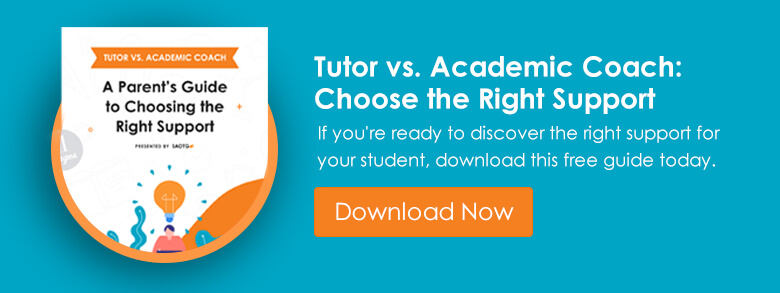“If you write well, you think well”, my high school English teacher belted from the front of the classroom. It was 8 am on a Monday the first time I heard those words. I don’t think I fully grasped them. As a student sitting in front of blank Microsoft word document, I was frozen, the blinking cursor taunting me. If I had so many ideas, why was I unable to write a single word? Everyone always told me I talked too much. How could I be speechless? I was dumbfounded, and so began my battle with the blank page.
Writer’s block is one of the most common frustrations for the modern student. Math problems, textbook reading, and science projects follow a relatively predictable timeline, but writing is erratic. Students oftentimes feel like they have no control. They want to grind the paper out, but it is never that simple. Writing is a different beast, and students are rarely taught how to tame it. So, how can teachers, parents, and educators help students suffering from writer’s block?
5 Proven Methods to Conquer the ‘Blank Page’
1) Remember Newton’s First Law of Motion
Newton says, “an object in motion stays in motion unless acted upon by an outside force”. Yes, this is useful for physics, but it is also applicable to writing. Most students can write well and write quickly once they start moving. As soon as they get over the inertia of starting the paper, an endless stream of thoughtful sentences usually follows. I encourage students who struggle with writing procrastination or writer’s block to develop a few methods to get themselves “in motion”. For example, I ask students to finish the scaffolding of their paper first, meaning produce a paragraph by paragraph outline to keep you moving. This way, if the student struggles with one paragraph, he or she can skip it and come back without disrupting the writing flow. Another method that students can use is playing “essay mad libs”. Similar to a technique from the movie Finding Forrester, essay mad libs allow a student to just finish a sentence rather than start one from scratch. The rhythm of typing helps a student get back in the swing of things. All parents and educators need to do is provide a subject and a verb for the next sentence. The student can finish the rest.
2) Don’t Let the Perfect Get in the Way of the Good
Remind students that writing has two components: drafting and editing. Neither of these steps can be skipped or combined. When students try to combine these steps, their progress comes to a grinding halt. Without both steps, students usually get bogged down in solving problems that don’t exist. They are trying to produce a perfect sentence on the first try. When this happens, ask them if it makes sense to add seasoning to food before they taste it. When students edit in their heads, it takes significantly longer to finish the paper. Instead, students should write an imperfect sentence, pinpoint the awkward word or phrase, and edit it. In other words, don’t let the perfect get in the way of the good. Editing is helpful and necessary but getting words on the page is always the first step. It is always easier to fix an actual problem with a sentence instead of fixing a theoretical problem.
3) Take a Brain Break
Yes, momentum is important, but rest can also help. The average student can only give 100% focus for one minute per year of age. Taking a brain break, can reset this “focus meter” and lead to productive writing. Of course, this requires a student to plan enough time to write the paper. Students often forget the benefits of starting a paper early. Firstly, it allows for breaks, which can help with focus and allow the subconscious to think about the paper when the student is not sitting in front of a laptop. Secondly, students can receive teacher feedback BEFORE the paper is officially submitted. Thirdly, Students spend less time writing overall and produce a better product compared to cramming.
4) When in Doubt, Ask WHY
Inevitably, a student runs out of ideas. For one reason or another, the next sentence does not come. In these moments, it is important to keep a brief pause from turning into a long delay. Writer’s block is often a product of overreacting and impatience. To defeat this, students should utilize two tried and true methods for re-discovering rhythm: ask why and ask so what. Good writers write clearly. Great writers answer their reader’s subconscious questions from the previous sentence. For example, a student writes “Harper Lee utilizes Scout’s curiosity and innocence to highlight major social issues of her time”. This is a good sentence. It makes an interesting point and identifies a clear argument. But then, the student hears a dog barking outside, completely interrupting the effortless writing flow that produced the last sentence. The student panics, looking to you for support. There’s an easy fix. Read the previous sentence aloud and ask ‘why’ or ‘So what’ or even ‘why is that important’. The student suddenly has thousands of ideas for the next sentence. He or she wants to relate Scout to other moral compasses in literature. He or she proposes that children are oftentimes the most just members of society. On and on, the deluge of ideas is endless. Powerful questions unlock the brilliance in your student’s brain. Just give them a system.
5) Find a Better Typist
Sometimes, students need to get out of their own way. They have great ideas, but perfectionist tendencies cloud their judgment. They agonize over every sentence. Without small victories, they can never develop a rhythm and the writing seems choppy and forced. Just like tip #2, the solution is to write first and edit later, but that isn’t always as easy as it sounds. In the scenarios, parents and educators should collaborate with their students and come up with creative ways to get words on the page. I have a few favorites. First, type for them. Ask them what they want to say and type every single word. Don’t let them stop to edit or agonize over word choice. Get the words out of their head and onto the paper. Editing can happen later. Another method is dictation. Whether the student uses Siri or google translate, dictation software forces brevity and progress. The student has to finish their thought before the little microphone icon times out. Sometimes this method of timed progress helps break the cycle of frustration. Try this with the perfectionist in your life.
At the end of the day, writing is difficult. Avoid using verbiage that downplays your students struggle with the blank page, it never helps. Instead, get down in the trenches and provide them with the systems to help themselves. Happy writing!





